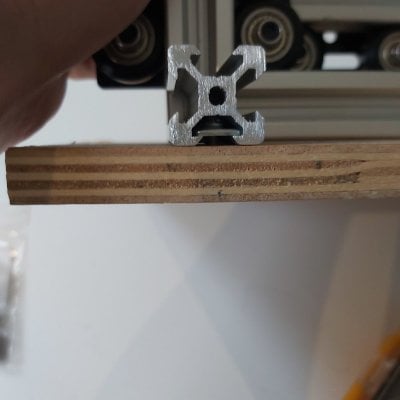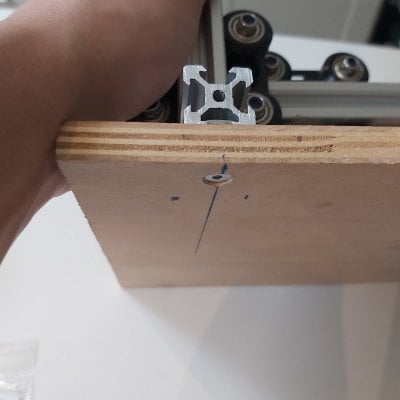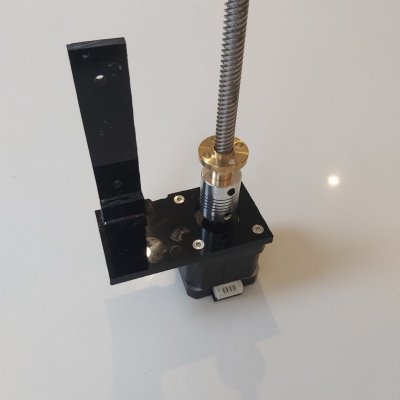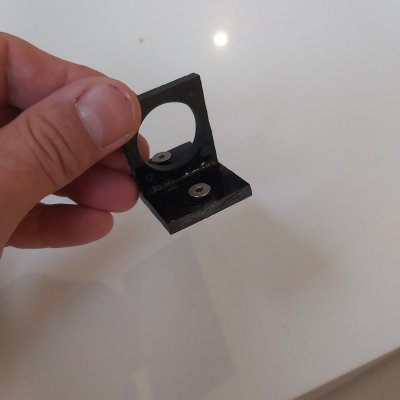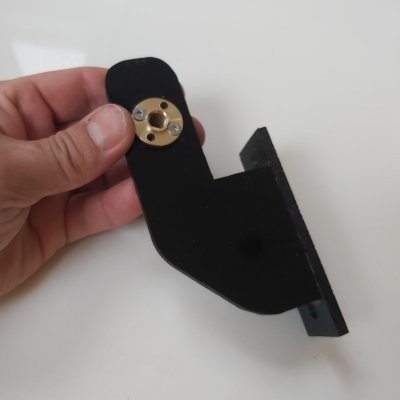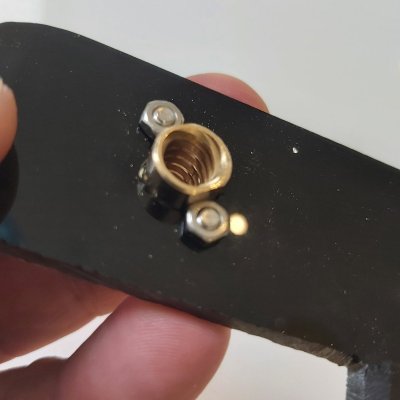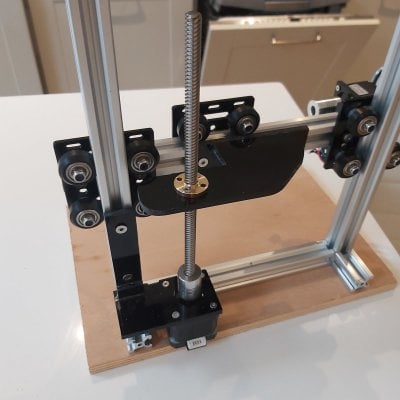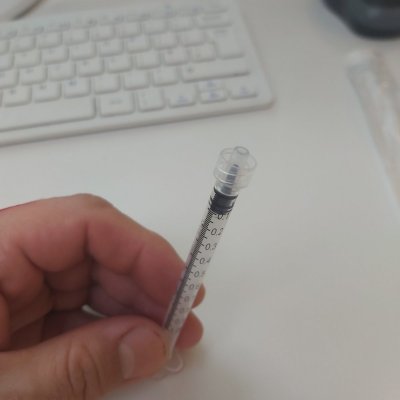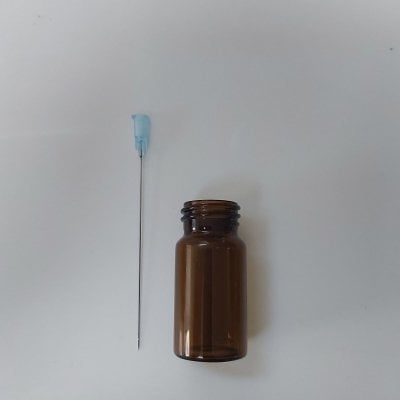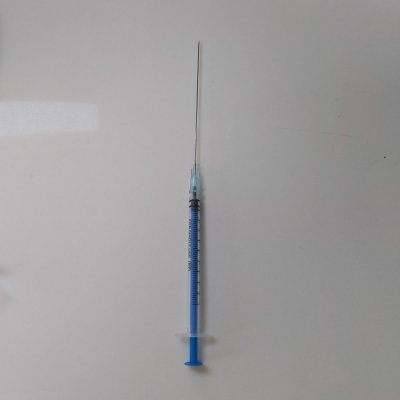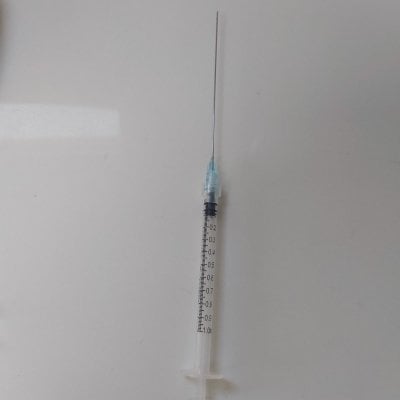Navigation
Install the app
How to install the app on iOS
Follow along with the video below to see how to install our site as a web app on your home screen.
Note: This feature may not be available in some browsers.
More options
You are using an out of date browser. It may not display this or other websites correctly.
You should upgrade or use an alternative browser.
You should upgrade or use an alternative browser.
DIY Robotic Tester - BoraTronic
- Thread starter Borat
- Start date
- Tagged users None
Daniel@R2R
Living the Reef Life
View Badges

Staff member
Super Moderator
Reef Squad
Partner Member 2024
Excellence Award
Photo of the Month
Article Contributor
Hospitality Award
Article Administrator
Reef Pumpkin Carver
R2R Secret Santa 2023
My Tank Thread
This is some other level innovation right here!
I don't know if this has been discussed in the previous 3 pages, but ReefBot already exists, and instead of moving the vials, it moves the needle (which I think would be easier). Also, one of the things I thought about while looking at the reefbot was, why not make it cylindrical and have the needle move around an axis, seems much easier than trying to do it on a track. Anyways, posting so I can be updated, this looks like a really neat build/project
- Joined
- Sep 9, 2019
- Messages
- 193
- Reaction score
- 148
Hi Vlad,Adafruit RGB sensor- I will use 2 of those, one to check the colour of testing vial and another to position reagent rack.
Another interesting project you have started. Will follow with interest, although I think it is easier for me to manually test for phosphate and nitrate once in a while. I believe that maintaining constant Alkalinity is much more important. Anyway, good luck with an interesting new endeavour.
As for the colour detection, I found that AS7341 is much more promising compared with that TCS3472 sensor. It has 9 bands built in, in the range from 415 through 910nm, and is ideally suited for determining light levels at different wavelength bands.
I've got one of these, was planning to make a DIY PAR meter with it, but as always with my projects, I have very little time and energy for the implementation. I think this sensor would be best suited for determining the colour in water tests as well. Maybe you would like to give it a try. I ordered mine from China, but you can find a variety of modules based on this chip on Amazon, and DFROBOTS too has a similar and very compact module. These are a tad more expensive than the more common RGB module, though, though.
Last edited:
The thing with the bands range - it is important for a par level sensor (I have been reading about DIY par meters a few days ago as a matter of curiocity). For a test to determine the colour of the solution, or the colour depth - this sensor capabilities should hopefully suffice.Hi Vlad,
Another interesting project you have started. Will follow with interest, although I think it is easier for me to manually test for phosphate and nitrate once in a while. I believe that maintaining constant Alkalinity is much more important. Anyway, good luck with an interesting new endeavour.
As for the colour detection, I found that AS7341 is much more promising compared with that TCS3472 sensor. It has 9 bands built in, in the range from 415 through 910nm, and is ideally suited for determining light levels at different wavelength bands.


I've got one of these, was planning to make a DIY PAR meter with it, but as always with my projects, I have very little time and energy for the implementation. I think this sensor would be best suited for determining the colour in water tests as well. Maybe you would like to give it a try. I ordered mine from China, but you can find a variety of modules based on this chip on Amazon, and DFROBOTS too has a similar and very compact module. These are a tad more expensive than the more common RGB module, though, though.

Hope that what political upheaval going on in the glorious country of Kazakhstan (being so near Kazakistan) , does not affect your state of mind and thus hinder your project work.
stay strong, stay vigilant !! I say FU%$#%# the Russians . (disclosure: I was born in USSR)
Personally: I WILL most definitely build an automatic tester machine, as I am a lazy ******* to do it manually. and I am a "constant data flowing measurements" junky and I want to have Alkalinity (Alk), Calcium (Ca), Magnesium (Mg), Nitrate (NO3), Phosphate (PO4), Nitrite (No2), Ammonia (NH3), Copper (Cu) and Iodine (I2) and more, on my dashboard. (compliments to ReefBot capabilities.. but for 900$ without shipment tax , bribe etc.. I think DIY would be better option. Better spend some $$$ on regents anyways.
stay strong, stay vigilant !! I say FU%$#%# the Russians . (disclosure: I was born in USSR)
Personally: I WILL most definitely build an automatic tester machine, as I am a lazy ******* to do it manually. and I am a "constant data flowing measurements" junky and I want to have Alkalinity (Alk), Calcium (Ca), Magnesium (Mg), Nitrate (NO3), Phosphate (PO4), Nitrite (No2), Ammonia (NH3), Copper (Cu) and Iodine (I2) and more, on my dashboard. (compliments to ReefBot capabilities.. but for 900$ without shipment tax , bribe etc.. I think DIY would be better option. Better spend some $$$ on regents anyways.
Last edited:
So if you would be building your own automatic tester - I can tell you it's easier done if you don't have size constraints, i.e. if you are NOT forced to be within Mastertronic's dimensions (which are already quite tight - probably the minimal size practically achievable) the build is much easier.Hope that what political upheaval going on in the glorious country of Kazakhstan (being so near Kazakistan) , does not affect your state of mind and thus hinder your project work.
stay strong, stay vigilant !! I say FU%$#%# the Russians . (disclosure: I was born in USSR)
Personally: I WILL most definitely build an automatic tester machine, as I am a lazy ******* to do it manually. and I am a "constant data flowing measurements" junky and I want to have Alkalinity (Alk), Calcium (Ca), Magnesium (Mg), Nitrate (NO3), Phosphate (PO4), Nitrite (No2), Ammonia (NH3), Copper (Cu) and Iodine (I2) and more, on my dashboard. (compliments to ReefBot capabilities.. but for 900$ without shipment tax , bribe etc.. I think DIY would be better option. Better spend some $$$ on regents anyways.
Well.. simplest routes are not my thing, therefore optimising every inch of space in my build - is the largest challenge here. I also aim to make it aesthetically pleasing - hopefully it will look professional enough that you would not think it's a DIY job.
I have seen (a couple of) people having built similar testing devices in the US, but they are typically the size of Victorian cupboard and don't have the look/appeal of a comercial product.
Follow the thread - it's going to become more interesting as I go along..
for sure following.
I have some good space in the sump area. though right now I am in a process of building the Phyto/artemia breeding farm which will take a considerable part of it.

I have some good space in the sump area. though right now I am in a process of building the Phyto/artemia breeding farm which will take a considerable part of it.
Thanks for extra info - this is quite helpful. As you can see - it is really is restricted to the number of vials and it's relatively large in size (for 8 reagent vias it uses against 12 in Mastertronic).I don't know if this has been discussed in the previous 3 pages, but ReefBot already exists, and instead of moving the vials, it moves the needle (which I think would be easier). Also, one of the things I thought about while looking at the reefbot was, why not make it cylindrical and have the needle move around an axis, seems much easier than trying to do it on a track. Anyways, posting so I can be updated, this looks like a really neat build/project
To your question about rotating rack:
- it's obviously simpler if your reagents are firmly fixed and form a single row of vials, along with your sample vial and RO vial, however you then need to have a number of magnetic stirrers organised under each reagent vial (with rotating rack - you just need to have one stirrer for the rack and one stirrer for the sample water vial)
- you cannot put your sample water and RO water vials on the rack, just because these require tubing connectors to stepper motors, therefore the only 2 setups possible (as I see it) is either ReefBot design or Mastertronic.
- you may rotate the syringe but then you still have the problem with having to have multiple stirrers, possibly problem with wires twisting as you rotate the syringe and the problem of having to have open space for rotating syringe. All-in-all you are likely to be worse off to either Mastertronoc or Reefbot designs.
Mastertronic is a better design for me - due to its much more compact footprint.
Hope this makes sense..
Last edited:
Hi! following with great interest the thread. I have been thinking for few months since I followed your Alk controller build about a DIY testing device. What do you think about using a broken/secondhand 3D printer as main build and substitute the extruder with the syringe dispenser? It would be bigger obviously but then you will have all the material there and ready to be modified. I am considering to build something that can also be used in a molecular lab for low accuracy jobs (like bacterial inoculations), and I think the accuracy of a 3d printer would be more than enough for 96 well plates
What I am buiding is effectively a 3D printer rig, except it moves in 2D axis only (in 3d printing the third axis is achieved by moving the bottom mount plate). You will need to buil a syringe actuator which is somewhat of a delicate job - but once you will see my design (using acrylic) - you can 3D print all parts to implement it yourself.Hi! following with great interest the thread. I have been thinking for few months since I followed your Alk controller build about a DIY testing device. What do you think about using a broken/secondhand 3D printer as main build and substitute the extruder with the syringe dispenser? It would be bigger obviously but then you will have all the material there and ready to be modified. I am considering to build something that can also be used in a molecular lab for low accuracy jobs (like bacterial inoculations), and I think the accuracy of a 3d printer would be more than enough for 96 well plates
Once I am done with the rig and move on to electircs, I will publish the PCB Gerber files - you can then order your PCB and soldier compoents...
So perfectly do-able in my opinion..
Not all 3D printers drop the bed for Z-axis, some raise the carriage of the X-axis and the bed is the Y-axis (Prusa/Bed Slinger design). I believe @KonradTO was possibly referring to the fact that you'll have the vials moving in either X or Y, but your needle will need to move in Z in order to move into the vials and out of the vials. But I could be mistaken.What I am buiding is effectively a 3D printer rig, except it moves in 2D axis only (in 3d printing the third axis is achieved by moving the bottom mount plate). You will need to buil a syringe actuator which is somewhat of a delicate job - but once you will see my design (using acrylic) - you can 3D print all parts to implement it yourself.
Once I am done with the rig and move on to electircs, I will publish the PCB Gerber files - you can then order your PCB and soldier compoents...
So perfectly do-able in my opinion..
Not exactly. My idea would be to keep the vials still and move the arm only. You would basically need to move the arm on the z axis, x axis (and y axis if you want to work with plates instead of vials). There's some interesting opensource material developed for molecular lab pipetting..and aquarium tests are nothing much different than thatNot all 3D printers drop the bed for Z-axis, some raise the carriage of the X-axis and the bed is the Y-axis (Prusa/Bed Slinger design). I believe @KonradTO was possibly referring to the fact that you'll have the vials moving in either X or Y, but your needle will need to move in Z in order to move into the vials and out of the vials. But I could be mistaken.
Similar threads
- Replies
- 44
- Views
- 2,920
- Replies
- 66
- Views
- 4,500



